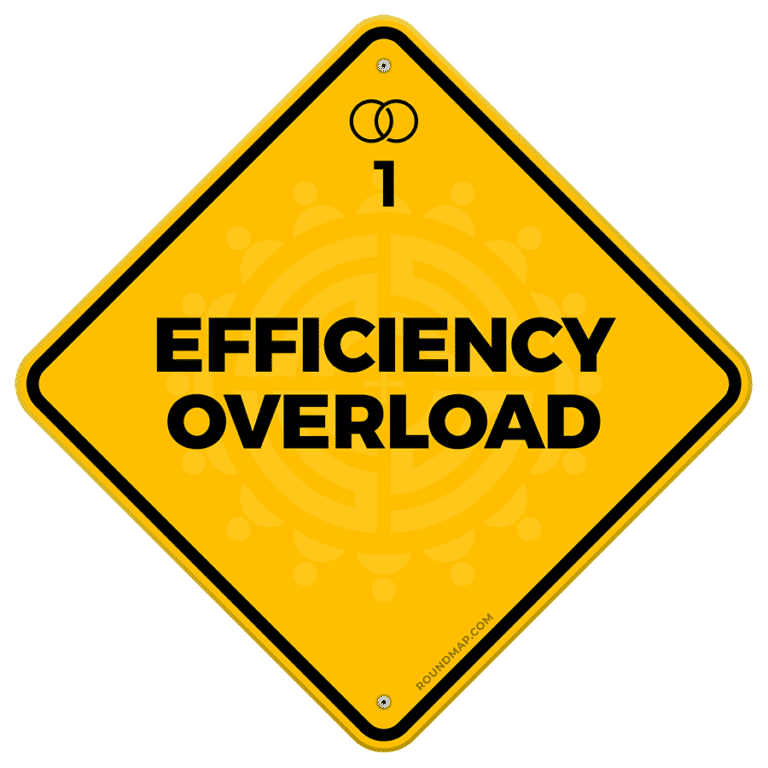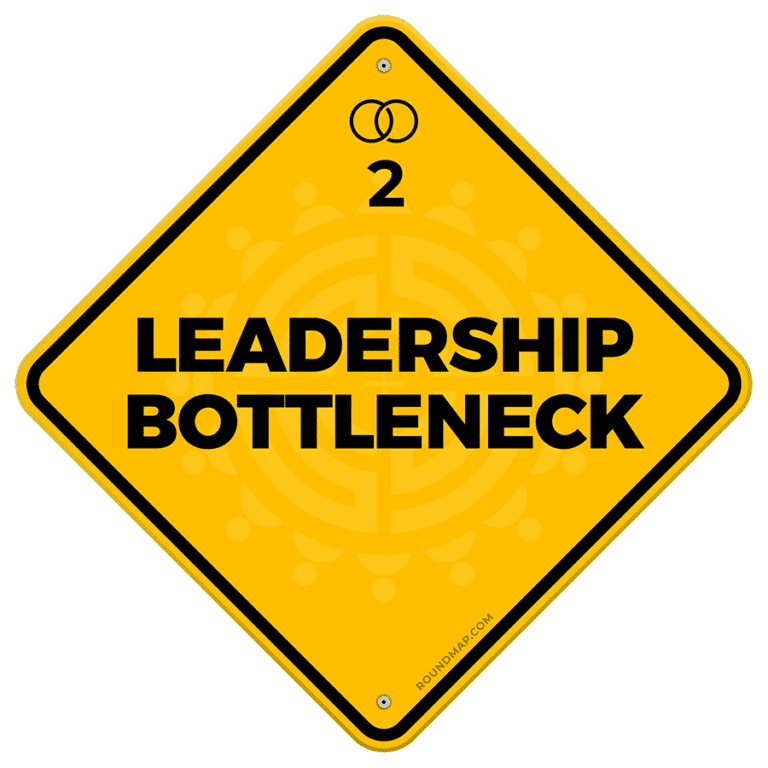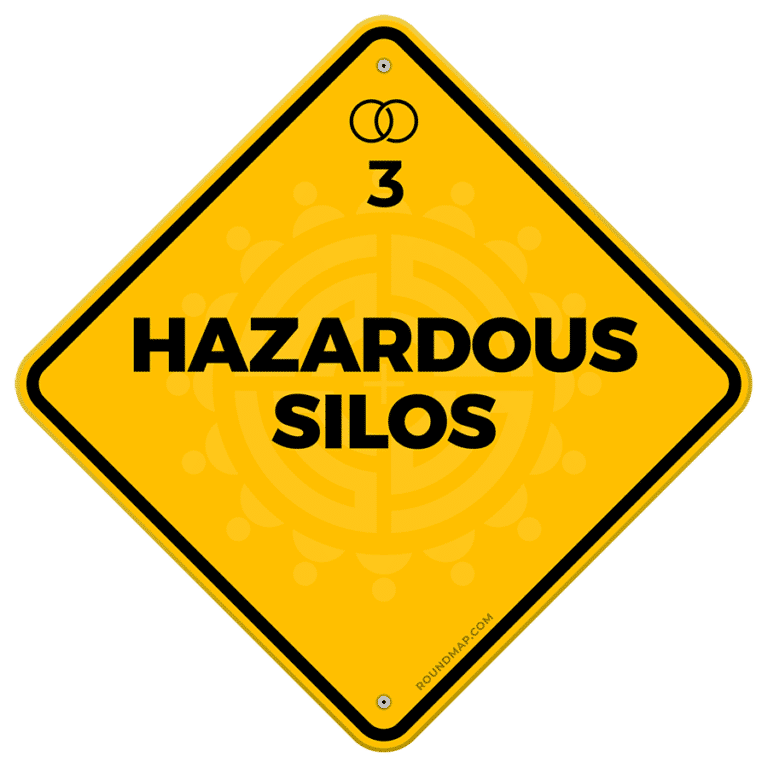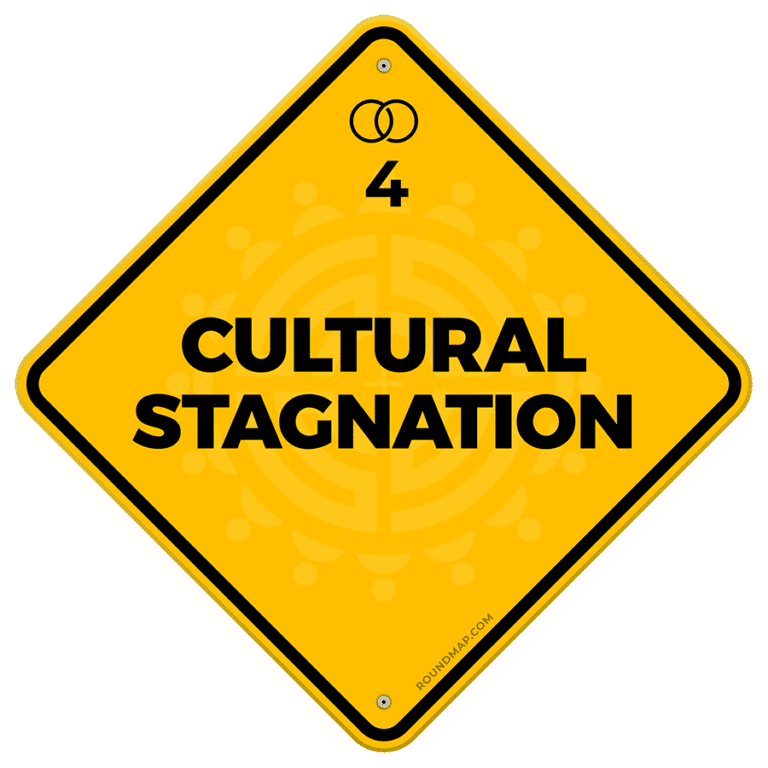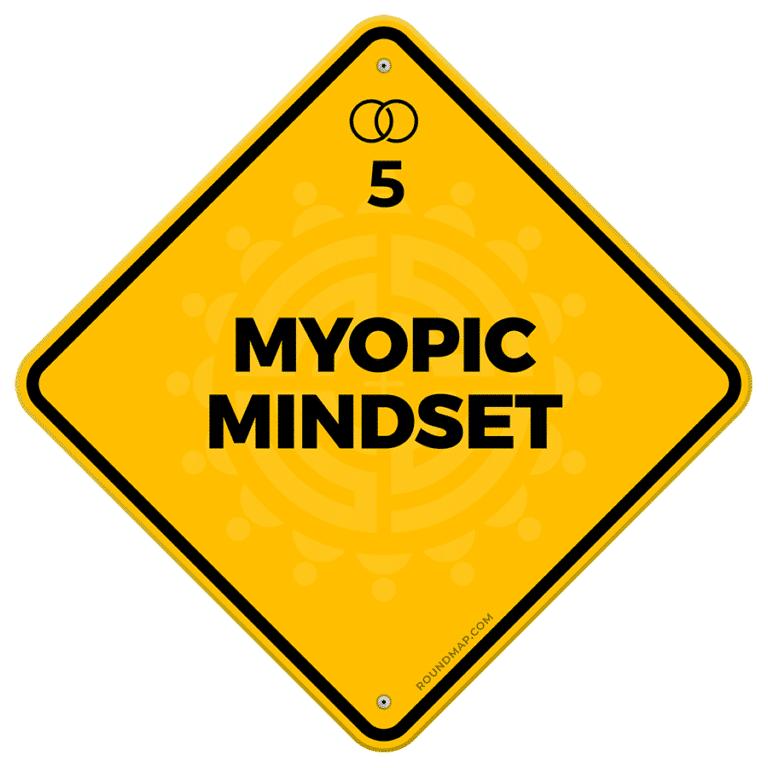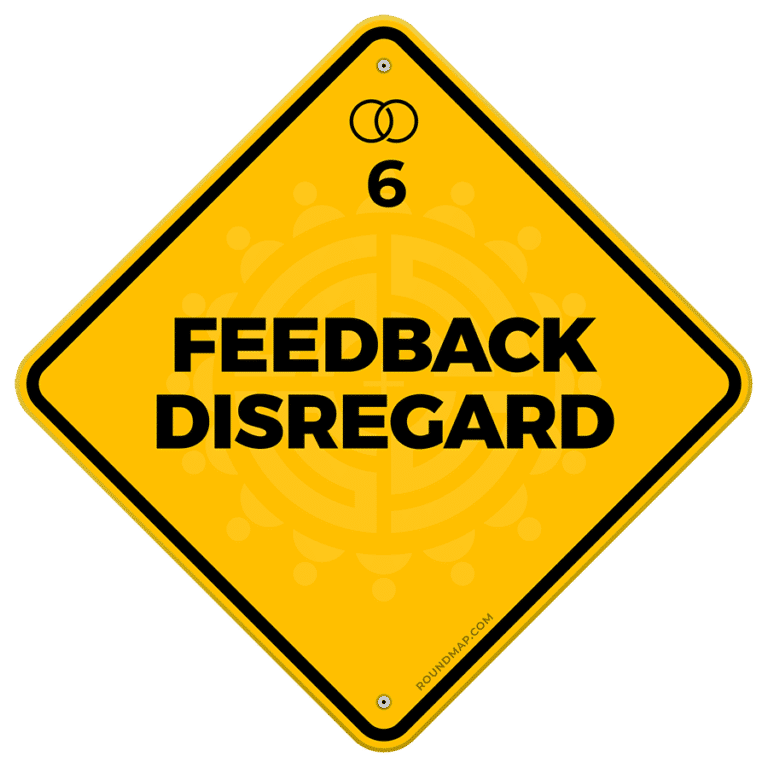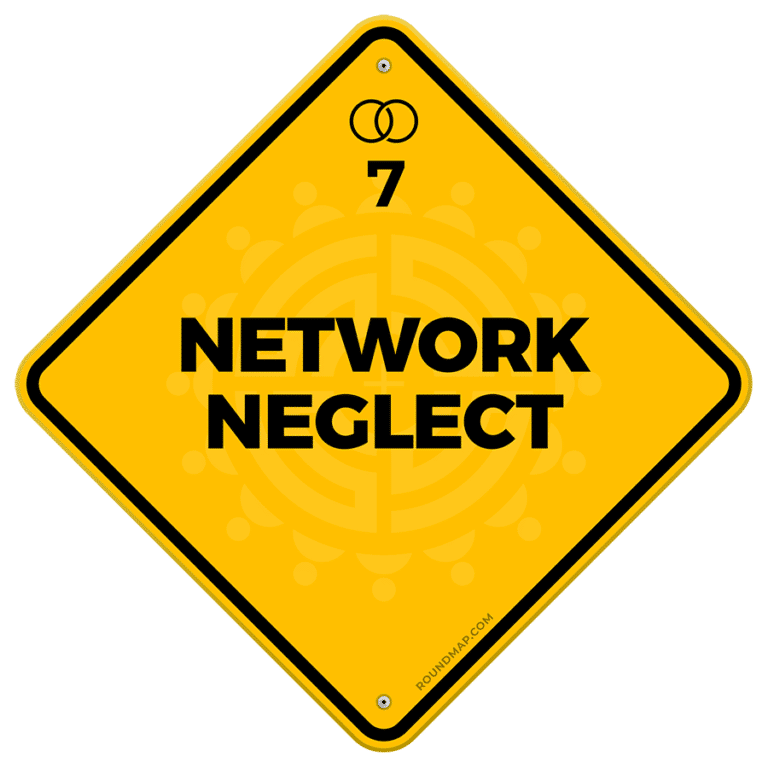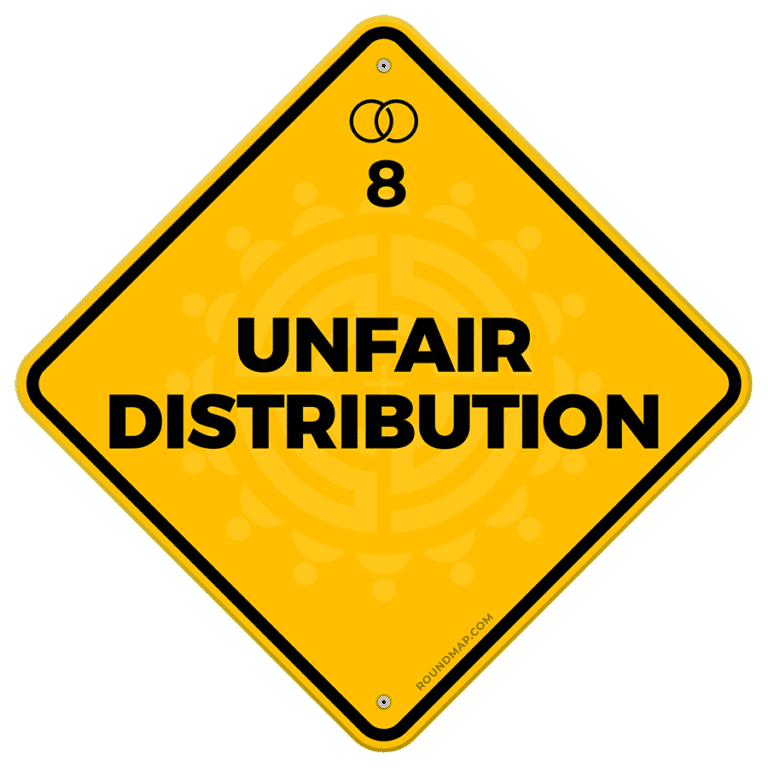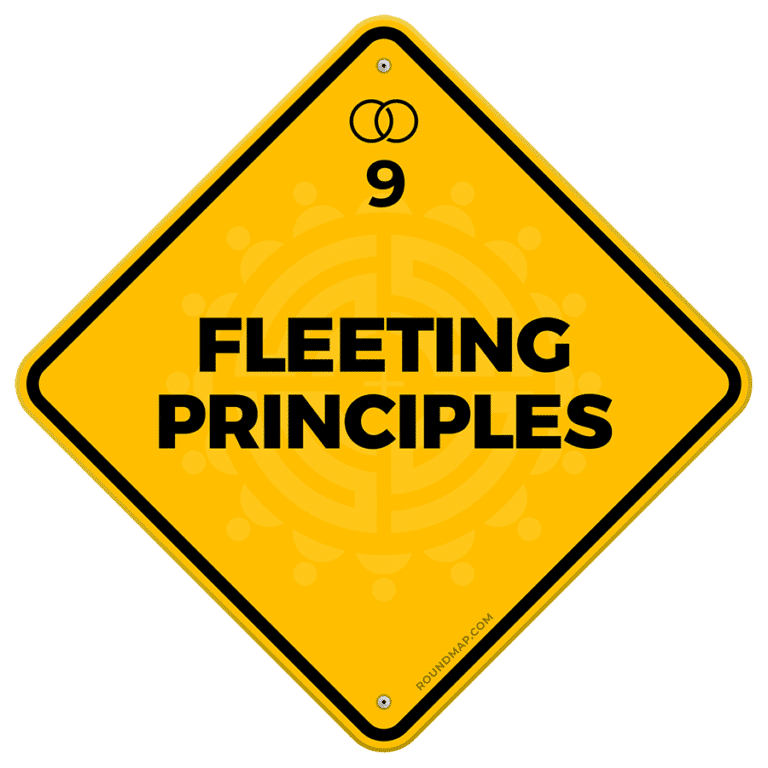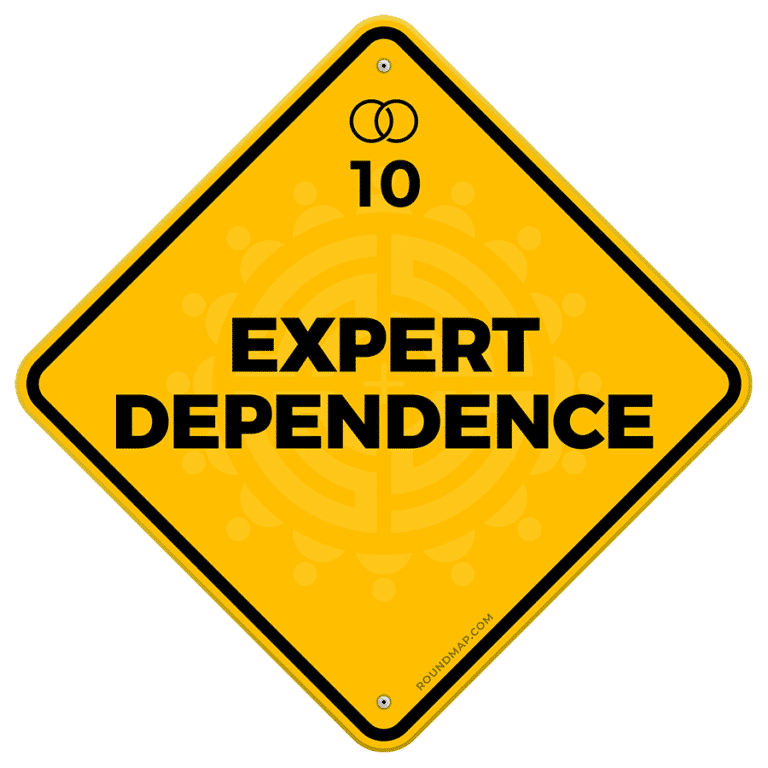The Inevitability of Impact
Imagine a steadfast march along a path worn by decades of tradition, where the mantra “This is how we’ve always done it” guides every step. Many businesses follow this familiar route, comforted by routine and established practices. Yet, looming ahead is a formidable barrier—an imposing wall born from complacency.
This wall is the inevitable result of a series of choices; each made confidently yet leading toward an unavoidable collision. If businesses persist on this inflexible trajectory, a disruptive collision is inevitable. This impact will reverberate throughout the organization and affect all stakeholders.
However, the dreams of innovation and sustainability, though currently obscured, can still be realized. The barrier symbolizes resistance to change and the dangers of myopia, but it also presents an opportunity for transformation. Hitting this wall means confronting a moment of stark realization, where past successes become irrelevant, and the brand’s potential dims. It’s a jolt—a wake-up call that may come too late.
For leaders and visionaries, this scenario is a stark warning. The future demands a pivotal decision: persist towards ruin or veer onto a new path that circumvents the impending collapse. This is a decisive moment. Will you choose the route that leads to resilience and renewal, or will you risk being overtaken by the inevitable?
Let us navigate these warning signs together, moving towards strategies that open paths to enduring success rather than dead ends.
Strategic Blind Spots: Indicators of Business Vulnerability
Let’s have a look at the warning signs. Each sign pinpoints a common oversight or error in judgment that can have cascading effects on a company’s trajectory. They’re not just warnings but critical insights calling for reflection and proactive change. When ignored, these blind spots can lead to strategic pitfalls, making them powerful focal points for leaders seeking to avoid the impending impact of obsolescence.
Warning Sign #1: "Efficiency Overload"
In the relentless pursuit of efficiency, organizations often fall prey to the “Efficiency Paradox.” This counterintuitive situation occurs when an intense focus on streamlining operations and cutting costs decreases long-term efficiency and overall effectiveness.
The consequences of this paradox can be severe, leading to a loss of competitive advantage, a decline in brand reputation, and a high turnover rate. Here’s a deeper look at how this unfolds and why it’s a dangerous route:
- Narrow Focus on Cost-Saving: Cutting costs can become an overriding goal, so much so that it blinds companies to other crucial aspects like investing in employee development, R&D, and customer service. This short-term gain can lead to long-term pain, as these areas are vital for sustained growth and competitive advantage.
- Quality Compromise: When the primary objective becomes doing more with less, the ‘less’ often compromises the quality of the product or service. A decline in quality can erode brand reputation and customer loyalty, which are far more expensive to rebuild than the initial savings.
- Innovation Starvation: Continuous innovation is the lifeblood of any long-lasting business. However, an excessive focus on efficiency can stifle creativity and discourage risk-taking. Without room to experiment and possibly fail, employees are less likely to come up with breakthrough ideas that could be the next big thing for the company.
- Process Rigidity: Over-optimized processes can become rigid, making it difficult for businesses to adapt to new market conditions or integrate innovative technologies. In a fast-paced world, agility is key, and a rigid process can mean missing out on opportunities simply because the company wasn’t nimble enough to capitalize on them.
- Employee Burnout: In an overly efficiency-driven culture, the pressure to perform can lead to employee burnout. When productivity is prized above all else, workers may feel like cogs in a machine, leading to low morale, high turnover, and the loss of valuable tacit knowledge.
- The Way Forward: Balancing efficiency with other key business imperatives involves a more nuanced approach. It requires leaders to understand the value of redundancy, the importance of fostering a culture of continuous learning, and the need to invest in innovation. Organizations must look beyond the numbers and see the human and creative aspects of the business as assets rather than costs. This balance ensures that efficiency supports the company’s broader vision rather than undermining it.
To avoid falling into the “Efficiency Overload” trap, businesses should not just consider but actively engage in regular reviews of their strategies. This ensures that efficiency enhancements are not achieved at the expense of quality, innovation, adaptability, and employee well-being. It’s about finding the sweet spot where efficiency aligns with and supports the organization’s mission and long-term success.
Warning Sign #2: "Leadership Bottleneck"
The “Leadership Bottleneck” warning sign cautions that an organization might face the risk of over-reliance on a single leader or a small group of leaders for direction and decision-making. This warning communicates that such a bottleneck can impede the flow of ideas, stifle innovation, and hinder an organization’s adaptability to change. It suggests a potential disconnect between the top of the organization and its various other levels, which could lead to missed opportunities and decreased employee engagement.
Here’s a deeper look at how this unfolds and why it’s a dangerous route:
Constriction of Diverse Perspectives: The bottleneck symbolizes a narrowing of input and perspectives, where only a few voices are heard and the organization’s collective intelligence is underutilized.
Inhibited Flow of Ideas: Just as a bottleneck restricts fluid flow, a leadership bottleneck can limit the flow of ideas and slow down the organization’s response to changes and challenges.
Dependency on a Few: It warns of the dangers of dependency on a select few leaders for guidance and decisions, which can lead to a fragile leadership structure and limit organizational resilience.
Need for Collaborative Leadership: The sign is a call to action to expand the leadership pipeline, encouraging the distribution of leadership responsibilities among various individuals and teams.
Encouragement of Inclusive Decision-Making: This warning reminds us to practice inclusive decision-making processes that leverage the insights and knowledge of employees at all levels.
Empowerment and Engagement: By highlighting the bottleneck, this sign prompts organizations to empower more people, fostering a sense of ownership and engagement across all departments and teams.
The “Leadership Bottleneck” warning sign represents the need for change towards a more distributed and collaborative leadership model, aligning with RoundMap’s vision of collaborative empowerment and systems thinking, ensuring sustainable, innovative, and adaptable organizational growth.
Warning Sign #3: "Hazardous Silos"
Silos within an organization, often characterized by insular departments or teams, pose a significant barrier to company-wide success and innovation. While specialization within departments can lead to in-depth expertise, lacking communication and collaboration across these divides can create a breeding ground for inefficiencies and missed opportunities.
Here’s a breakdown of the dangers of silos and how they can be dismantled:
Communication Breakdown: Silos disrupt the flow of information. When departments do not communicate effectively, the organization can miss critical insights that could influence strategic decisions or improve operations.
Duplication of Efforts: Silos can lead to multiple teams unknowingly working on similar tasks or projects, duplicating efforts, and wasting resources that could be better allocated elsewhere.
Innovation Stifling: The cross-pollination of ideas is essential for innovation. Silos prevent the exchange of ideas and knowledge that can lead to innovative solutions, limiting the organization’s ability to adapt and grow.
Cultural Dissonance: Different silos within the same organization can develop their sub-cultures and agendas, which can conflict with each other and with the overall mission of the company, leading to internal strife and a disjointed approach to the market.
Responsiveness Lag: In today’s fast-paced market, the ability to respond quickly to changes can be the difference between success and failure. Silos slow down the decision-making process, hindering a company’s ability to react swiftly to market changes or operational crises.
Breaking Down Silos: The key to dismantling hazardous silos involves fostering an environment of open communication and collaboration. Encouraging interdepartmental projects, implementing company-wide goals that require cross-collaboration, and using technology that enhances visibility across the company can all help break down silo walls. Leadership must also model collaborative behavior and emphasize the importance of collective success over individual department wins.
Leaders must recognize the signs of siloed thinking and actively work to promote a unified, holistic approach to organizational challenges. By doing so, they can harness the full potential of their workforce, drive innovation, and ensure the company’s adaptability in a constantly evolving business landscape.
Warning Sign #4: "Cultural Stagnation"
In the shadow of complacency, cultural stagnation takes root. This is where an organization, once buzzing with the energy of progress, slips into a state of inertia. Comfort with “the way things are done” breeds a complacent mindset, discouraging the push for innovation and the pursuit of new horizons.
Here’s a deeper dive into how this stagnation manifests and what can be done to rejuvenate the culture:
Contentment with Mediocrity: A complacent culture often lacks the drive to strive for excellence. There’s a prevailing attitude that what has worked in the past will continue to work, leading to a dangerous overreliance on outdated successes.
Disincentive for Innovation: In a stagnant culture, taking initiative or championing new ideas is not only unrewarded but often unnoticed. This lack of recognition deters the kind of risk-taking that is essential for innovation and growth.
Risk-Avoidance: When a company is complacent, there’s an aversion to risk that can hinder necessary changes and adaptations. The fear of failure outweighs the potential benefits of success, leading to missed opportunities.
Disengagement: Employees in a stagnant culture often experience a disconnect from the organization’s goals and vision, leading to lower morale and productivity. They may feel their contributions are neither valued nor impactful.
Breaking the Cycle of Stagnation: It takes deliberate action to break free from the hold of cultural stagnation. Leadership must commit to cultivating an environment that encourages continual learning, celebrates creative thinking, and embraces change as a constant.
Revitalizing Strategy: Implementing programs that promote continuous improvement and personal development can rekindle the desire to learn and grow. Additionally, giving employees a platform to voice their ideas and ensuring those ideas are considered and acknowledged can reignite engagement.
Encouraging Calculated Risks: To move away from complacency, it’s essential to create an atmosphere where calculated risks are encouraged, and failures are seen as stepping stones to innovation.
Recognizing and Rewarding Progress: Regular recognition of efforts and achievements can motivate employees to maintain momentum. It’s crucial to celebrate not just the milestones but also the progress made toward them.
By acknowledging complacency and tackling cultural stagnation head-on, organizations can breathe new life into their culture, turning potential stagnation into dynamic growth, and reorienting themselves on a path towards sustained success.
Warning Sign #5: "Myopic Mindset"
A “Myopic Mindset” in business refers to an overly short-term focus where immediate results are prioritized at the expense of long-term sustainability and growth. This short-sighted approach can blind organizations to evolving market demands and future opportunities, ultimately setting the stage for early demise. Here’s a detailed look at the dangers of this mindset and strategies to overcome it:
- Short-term Gains Over Long-term Strategy: Focusing solely on short-term results, such as quarterly earnings or immediate cost reductions, can lead to decisions that jeopardize future growth. This might include cutting back on research and development, employee training, or customer satisfaction initiatives vital for future success.
- Neglect of Future Trends and Innovations: A myopic view prevents organizations from seeing and adapting to technological changes, customer preferences, and competitive landscapes. Failing to invest in these areas can leave a company outdated and unable to compete as new trends emerge.
- Underinvestment in Relationships and Brand Loyalty: Short-term thinking often overlooks the importance of investing in customer relationships and brand loyalty. This can result in a transactional approach to business interactions, which fails to cultivate lasting customer connections that drive repeat business.
- Employee Disengagement and Turnover: When leadership focuses only on immediate outputs, it can neglect the broader aspects of employee engagement and development. This may lead to high turnover rates and difficulty attracting top talent as employees seek employers with more vision and commitment to growth.
Breaking Away from the Myopic Mindset:
- Long-term Planning: Incorporate long-term strategic goals into the business planning process. This includes setting ambitious objectives beyond the immediate fiscal cycle and aligning with the company’s mission and vision.
- Balanced Scorecard Approach: Use a balanced scorecard that includes financial metrics and measures related to customer satisfaction, internal processes, and learning and growth. This helps ensure a more holistic approach to success and keeps long-term objectives in focus.
- Continuous Learning and Adaptation: Foster a culture that values ongoing learning and adaptation. Encourage teams to stay updated with industry trends and innovations and invest in continuous training and development.
- Stakeholder Engagement: Regularly engage with various stakeholders, including employees, customers, and partners, to gain diverse insights into long-term needs and opportunities.
By recognizing and addressing a myopic mindset, organizations can shift their focus from merely surviving the next quarter to thriving in the coming decades. This transition is essential for building a resilient and sustainable business that can navigate the challenges of a rapidly changing world.
Warning Sign #6: "Feedback Disregard"
Feedback is an essential resource for continuous improvement and innovation. The warning sign “Feedback Disregard” highlights a critical oversight within organizations that fail to acknowledge and act upon the insights provided by customers, employees, and partners.
Let’s consider some of the consequences of disregarding feedback:
- Stunted Growth: Organizations that ignore feedback miss out on opportunities to refine their offerings and internal processes, limiting their potential for growth and adaptation.
- Customer Alienation: When feedback is consistently overlooked, customers may feel undervalued and disengage, losing loyalty and potentially driving them to competitors.
- Innovation Blockades: Feedback is often a seedbed for innovation. Disregarding it can block the flow of new ideas that could transform or significantly improve the business.
- Employee Dissatisfaction: Employees who see their feedback ignored will likely feel their contributions are not valued, leading to decreased morale and increased turnover.
Strategic Importance of Embracing Feedback:
- Enhancing Products and Services: By actively seeking and integrating feedback, organizations can pinpoint and address areas where their products or services need improvement.
- Cultivating Loyalty: Responsive action to feedback can significantly enhance customer and employee satisfaction and loyalty, as stakeholders feel heard and valued.
- Driving Innovation: Feedback loops encourage a culture of openness where new ideas are valued and explored, paving the way for innovative solutions that keep a business competitive and relevant.
- Adaptability: In a dynamic market, feedback is vital for agility, allowing organizations to respond swiftly and effectively to changing consumer needs and market conditions.
Organizations that prioritize and integrate feedback into their strategic and operational frameworks are committed to ongoing excellence and adaptability. By addressing the “Feedback Disregard” warning sign, businesses can avoid the pitfalls of stagnation and align more closely with the evolving demands of the market and their community, ensuring a sustainable path toward success and growth.
Warning Sign #7: "Network Neglect"
Informal networks — the web of relationships and unofficial communication channels within every organization — are essential for fostering innovation, adaptability, and resilience. These networks operate beyond the confines of formal structures and hierarchies, offering a unique avenue for rapidly exchanging ideas and support.
The warning sign “Network Neglect” highlights a critical oversight where an organization fails to recognize and leverage these powerful dynamics, potentially leading to slower response times, reduced innovation, and decreased adaptability.
Consequences of Network Neglect:
- Reduced Innovation: Informal networks are often the birthplace of creative ideas and solutions that formal processes may stifle. Neglecting these networks means potentially missing out on groundbreaking innovations.
- Slower Adaptation to Change: These networks can quickly disseminate information and mobilize resources in response to changes, making an organization more agile. Without tapping into these networks, companies may find themselves less responsive.
- Weakened Resilience: Informal networks provide support and can rally the workforce during crises. Their neglect can weaken an organization’s ability to cope with and recover from challenges.
- Loss of Employee Engagement and Morale: Employees often feel more connected and valued through informal networks. Not recognizing or supporting these networks can lead to disengagement and decreased morale.
Strategies to Leverage Informal Networks:
- Recognize and Map Out Informal Networks: Use analysis tools to identify and understand how these networks function within the organization. Knowing who the informal leaders are can help disseminate information and drive change.
- Facilitate the Growth of Informal Networks: Create spaces and opportunities for informal interactions, such as social events, open work areas, and cross-departmental projects.
- Incorporate Feedback from Informal Networks into Decision Making: Informal networks can provide ground-level insights that formal channels might miss. Incorporating this feedback can enhance decision-making processes.
- Encourage Leadership to Engage with Informal Networks: Leaders should actively participate in and nurture these networks, recognizing their value and integrating their insights into the broader organizational strategy.
By acknowledging and nurturing informal networks, organizations enhance operational agility and cultivate a more engaged and committed workforce. This warning sign serves as a reminder of the hidden power within these less formal yet profoundly influential relationships and communication channels.
Warning Sign #8: "Unfair Distribution"
“Unfair Distribution” refers to the harmful practice of disproportionately favoring shareholder interests while sidelining the needs and interests of broader stakeholder groups such as employees, customers, suppliers, and the community.
This exclusion underlines an ethical imbalance and can severely impact the organization’s sustainability, reputation, and operational success. It goes against the foundations of ethical prosperity, which advocate for harmonizing equitable profit distribution with responsible growth, as detailed in the Twin Vectors framework of RoundMap®.
Consequences of Unfair Distribution:
- Reduced Employee Commitment: Neglecting employee interests can lead to lower engagement, higher turnover, and reduced productivity.
- Customer Detachment: Overlooking customer feedback and needs to maximize short-term shareholder gains can erode customer loyalty and satisfaction, undermining long-term business viability.
- Community Disconnection: Ignoring the societal impacts of business decisions can damage the organization’s public image and foster resistance from community groups.
- Innovation Stifling: Excluding diverse stakeholder voices can prevent organizations from capturing valuable insights and opportunities essential for innovation and progression.
Strategies to Address Unfair Distribution:
- Broad Stakeholder Engagement: Commit to understanding and integrating the needs and expectations of all stakeholders through regular meetings, feedback systems, and inclusive decision-making processes.
- Balanced Scorecard Approach: Implement a balanced scorecard that evaluates performance across financial and non-financial metrics to ensure a comprehensive view of organizational impact.
- Corporate Social Responsibility (CSR) Initiatives: Enhance CSR efforts to address social, environmental, and economic challenges, demonstrating a genuine commitment to all stakeholders.
- Transparent Reporting: Enhance transparency in decision-making processes, clearly communicating how decisions are made and their expected impacts on various stakeholder groups.
By actively addressing “Unfair Distribution,” organizations can fulfill their ethical obligation to all stakeholders, ensuring a fair and inclusive approach that supports long-term success and sustainability in an interconnected global environment.
Continue reading: Foundations for Ethical Prosperity
Warning Sign #9: "Fleeting Principles"
“Fleeting Principles” highlights a situation where organizational values are declared but not deeply ingrained, leading to a swift abandonment when actual challenges arise. This behavior is particularly detrimental in times of crisis when the integrity of these values is most critical. The term encapsulates the danger of espousing values not supported by actions, essentially making them temporary or convenient rather than foundational.
Ed Bastian’s Leadership as a Counterexample:
During the unprecedented downturn caused by the COVID-19 pandemic, while many companies quickly downsized their workforce in response to financial pressures, Ed Bastian and Delta Airlines demonstrated a contrasting approach. By previously investing in a culture of appreciation and loyalty — exemplified by gestures like painting a plane with the names of employees — Bastian had nurtured a deep reservoir of goodwill and trust. This foundational strength allowed Delta to navigate the crisis with strategic employee support measures rather than layoffs, exemplifying a steadfast adherence to core values.
Consequences of Fleeting Principles:
- Loss of Trust: When stakeholders perceive that values are only upheld when convenient, trust is eroded, which can be devastating for employee morale and customer loyalty.
- Reputational Damage: Companies that fail to live up to their stated values, especially in critical times, face significant reputational risks that can impact customer perceptions and investor confidence.
- Leadership Credibility: Leaders who do not act consistently with professed values may face challenges in motivating their teams or leading effectively, particularly in future crises.
- Cultural Weakness: An organizational culture that lacks genuine commitment to its values is less likely to foster engagement, innovation, and resilience among its members.
Strategies to Embed True Values:
- Consistent Leadership: Ensure that all leaders, from the top down, consistently demonstrate the company’s values in both actions and decisions.
- Transparent Decision-Making: Make decisions transparently, showing how they align with the organization’s values, especially during challenging times.
- Regular Reflection: Regularly reflect on the company’s practices to ensure they align with stated values and make adjustments where necessary.
- Stakeholder Engagement: Engage various stakeholders in discussions about the company’s direction and values to ensure an inclusive approach to corporate ethics.
By promoting “Fleeting Principles” as a warning sign, organizations are reminded of the importance of genuine, enduring commitment to their values. This ensures that these principles truly guide their actions and strategies, particularly during times of adversity. This supports long-term success and builds a resilient and trustworthy corporate identity.
Continue reading: Foundations for Ethical Prosperity
Warning Sign #10: "Expert Dependence"
“Expert Dependence” captures the risk of relying too heavily on specialists whose narrow focus may not adequately address the multifaceted challenges of complex adaptive systems (CAS). In dynamic and uncertain environments, such as those faced by businesses today, relying solely on experts can lead to misguided strategies that fail to consider broader perspectives and the interconnectedness of various factors.
Consequences of Expert Dependence:
- Narrow Strategic Vision: Experts often have deep knowledge in specific areas but may lack the breadth needed to see interdependencies and broader systemic impacts. This can lead to well-informed strategies in one area but blind to others.
- Stifled Innovation: Overreliance on experts can suppress creative solutions that emerge from diverse and cross-disciplinary teams. Innovation often occurs at the intersection of varied fields and experiences.
- Reduced Adaptability: Reliance on traditional expertise in rapidly changing environments can hinder an organization’s ability to pivot and adapt. Experts might be entrenched in established ways of thinking that are less effective in new contexts.
- Echo Chamber Effect: When teams are composed predominantly of experts in a single domain, there is a risk of creating an echo chamber that reinforces existing views without challenging them with fresh perspectives.
Strategies to Mitigate Expert Dependence:
- Diverse Teams: Build teams that include members from various disciplines, backgrounds, and perspectives. This diversity fosters a richer pool of ideas and more robust problem-solving capabilities.
- Cross-training: Encourage employees to develop skills and knowledge outside their primary areas of expertise. This not only broadens their perspectives but also enhances team flexibility.
- Scenario Planning: Engage in scenario planning involving stakeholders from different business areas to explore a range of possible futures and prepare for unexpected changes.
- Feedback Loops: Establish robust feedback mechanisms that allow new information and perspectives to continually inform decision-making processes, reducing the risk of strategic myopia.
By highlighting “Expert Dependence” as a warning sign, organizations are reminded of the importance of cultivating a broad-based approach to leadership and decision-making. This ensures that strategies are resilient, adaptable, and capable of thriving in complex environments where multiple factors and uncertainties must be navigated collaboratively.
Continue reading:
Author
-
Edwin Korver is a polymath celebrated for his mastery of systems thinking and integral philosophy, particularly in intricate business transformations. His company, CROSS-SILO, embodies his unwavering belief in the interdependence of stakeholders and the pivotal role of value creation in fostering growth, complemented by the power of storytelling to convey that value. Edwin pioneered the RoundMap®, an all-encompassing business framework. He envisions a future where business harmonizes profit with compassion, common sense, and EQuitability, a vision he explores further in his forthcoming book, "Leading from the Whole."

